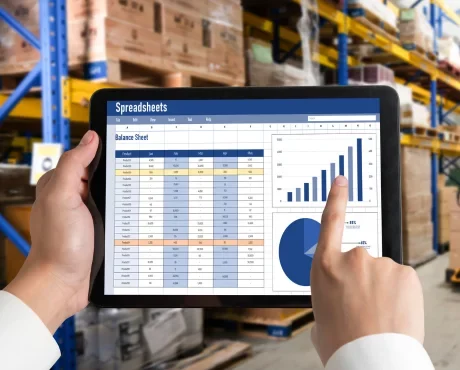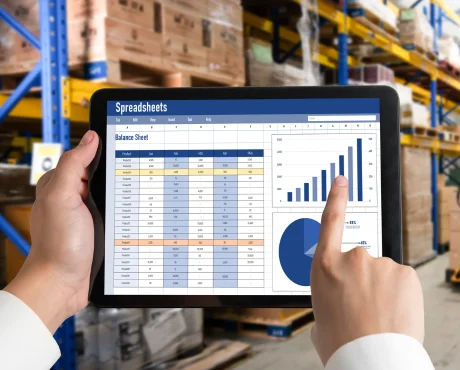In B2B sales, one-time buys are becoming less common. Businesses, whether manufacturers ordering raw materials or distributors stocking up, buy in bulk to satisfy operational needs, minimize costs, and maintain a constant supply. Buying in bulk is not only necessary; it’s a calculated action taken to streamline business operations and bring stability.
But the manual management of bulk prices and costs usually brings inefficiencies and risks into the equation. Here is how bulk costing automation can convert these challenges into opportunities for efficiency and growth.
The Hidden Costs of Manual Bulk Costing

Suppose you’re a manufacturing executive in charge of overseeing bulk procurement. Your staff spends hours entering information into spreadsheets, monitoring various suppliers’ prices, and manually recalculating for the most recent market shifts. It is a time-consuming task with high susceptibility to human error, and even though you might get it correct for the most part, tiny mistakes end up leading to large-scale financial losses.
This is the nature of manual bulk costing- a process reliant on data entry, formulas, and calculations prone to human error. Whether a neglected price change, an overlooked quantity adjustment, or an inaccurate discount, these mistakes are expensive.
And let’s not count the time wasted correcting them. In today’s competitive marketplace, these inefficiencies are unacceptable. Automation can do this by providing live, accurate information that minimizes the need for manual input, streamlining the whole bulk costing procedure, and eradicating errors that might otherwise jeopardize your business.
Also Read: Zero-Based Budgeting in Procurement: Why Manufacturers Should Adopt It
5 Challenges of Bulk Costing and How Automation Can Help
Challenge #1: Price Volatility and Supply Chain Uncertainty

We live in an era of price volatility. Geopolitical shifts, changes in global demand, and even natural disasters can drastically affect the cost of raw materials. As a manufacturer, you’re constantly navigating price hikes from suppliers and trying to predict how these fluctuations will affect your overall budget. The traditional manual approach of bulk costing- relying on outdated data and spreadsheets and requiring constant manual updates- often results in miscalculations.
How Automation Helps
Automation in bulk costing provides a sophisticated solution to this problem. Automated systems integrate real-time data from suppliers and markets, allowing your costing models to adjust instantly as prices change. With automation, your procurement team can track price fluctuations live, update cost models in real time, and make smarter, faster purchasing decisions. This not only minimizes the risk of price miscalculations but also ensures your costing models are always accurate, even in times of uncertainty.
Challenge #2: Manual Errors and Inefficiencies in Costing
Manual data entry might seem like a straightforward task, but it’s riddled with opportunities for mistakes. From incorrect pricing to forgetting to apply the right discounts, manual processes leave ample room for human error. Even small errors, such as a missing decimal point or an outdated price, can snowball into larger financial discrepancies that affect profitability and supply chain operations.
How Automation Helps
Bulk costing automation removes the reliance on manual data entry and human calculations. By using automated algorithms and AI-powered tools, your costing models become more precise. For example, an automated system can track prices and quantities across multiple suppliers and locations and immediately apply cost-saving measures. The system does all the heavy lifting, ensuring that your team spends less time fixing errors and more time strategizing for growth.
Additionally, with automation, you gain the benefit of speed. Bulk costing calculations, which once took hours, can now be completed in minutes. This boosts efficiency while minimizing errors, reducing overhead costs, and freeing up valuable time for employees to focus on higher-value tasks.
Also Read: Procurement vs. Purchasing: Understand the Key Difference and Why It Matters
Challenge #3: Managing Complex Bulk Purchasing Orders

Bulk purchasing often involves complex orders from multiple suppliers, diverse quantities, and varying delivery schedules. Managing this manually is a logistical nightmare. Mistakes like missed discounts, incorrect order quantities, or delayed shipments can disrupt production and lead to unnecessary costs.
How Automation Helps
Automation streamlines the bulk purchasing process by consolidating orders, managing inventory levels, and ensuring the best order quantities. Automated systems track your inventory in real time and use historical data to predict demand more accurately. For example, if your system detects that you need a certain quantity of material to fulfill upcoming production orders, it can automatically trigger an order at the right time and from the most cost-effective supplier.
Additionally, automation can identify volume discounts or better payment terms, ensuring that you’re always getting the best deal. By managing orders more effectively, automation minimizes the risk of stockouts or excess inventory, which can lead to overstocking costs or lost production time.
Challenge #4: Inconsistent Cash Flow Due to Large Upfront Costs
Manufacturers often face cash flow issues due to the large upfront costs associated with bulk orders. While raw materials are purchased in bulk to take advantage of lower prices, the upfront payment can strain a company’s liquidity, especially if production schedules are not synchronized with procurement.
How Automation Helps
By automating bulk costing, your business can better predict cash flow requirements and manage expenses more efficiently. Automated systems can track upcoming orders and integrate with your financial planning tools to forecast payment schedules. For example, the system can alert you to upcoming bulk orders, calculate the total payment, and project the financial impact on your cash flow.
This advanced forecasting enables better decision-making. You’ll be able to set up alerts for order approvals or payments, allowing you to maintain better control over finances and avoid cash flow shortages. Furthermore, automation helps streamline your payment process by tracking outstanding invoices, ensuring that you never miss an important payment deadline.
Challenge #5: Ineffective Inventory Management and Overstocking
One of the biggest challenges in bulk purchasing is managing inventory. Predicting demand is often more of an art than a science, and without proper tools, manufacturers can find themselves overstocking materials that eventually become obsolete or tie up valuable warehouse space. Conversely, underestimating demand can lead to stockouts, halting production, and incurring costly delays.
How Automation Helps
Automation takes the guesswork out of inventory management. By tracking inventory in real time and using historical data to predict future demand, Automation ensures that your purchasing decisions align with actual production needs. Automated systems can suggest optimal purchase quantities and even alert you when inventory levels reach reorder thresholds.
This means no more overstocking, no more guesswork, and no more costly storage fees. Plus, your production team will always have access to the materials they need, ensuring that operations continue smoothly and that you’re not caught in a tight spot due to a stockout.
Also Read: How to Build a Cost Breakdown Structure for Budget Accuracy
The ROI of Bulk Costing Automation

You might wonder, “What’s the return on investment (ROI) for automation?” Simply put, the ROI of bulk costing automation is enormous. By streamlining processes, reducing errors, and optimizing procurement, manufacturers can experience significant time and cost savings.
The reduced administrative burden alone is enough to justify the investment. Teams that once spent hours calculating, updating, and correcting spreadsheets can now focus on strategic initiatives that drive the business forward. Automated systems also give manufacturers better negotiation power with suppliers by providing precise cost data, enabling them to secure better pricing, payment terms, and discounts.
Moreover, automating bulk costing reduces financial risks associated with price volatility and inventory mismanagement, ensuring more predictable costs and a healthier bottom line. By embracing automation, manufacturers can unlock efficiencies that were previously unimaginable, making them more agile, responsive, and cost-effective in a fast-evolving market.
Conclusion
In a world where operational efficiency is a critical determinant of success, manufacturers can no longer afford to rely on outdated, manual processes. Bulk costing Automation offers a revolutionary way to address common pain points like price volatility, human error, complex orders, cash flow management, and inventory inefficiencies.
Cost It Right helps you not only improve cost accuracy and efficiency but also gain the agility needed to stay ahead of the competition. Take a demo today!





